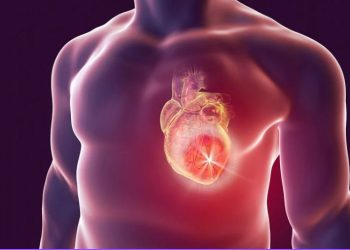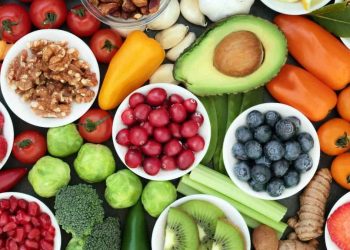What causes muscle growth?
Three special proteins have a significant influence on whether muscles grow. Two of these proteins are produced in varying amounts by the body. These rhythmic fluctuations in gene expression are crucial for the controlled transformation of stem cells into muscle cells.
Fluctuations in the production of proteins have a major impact on whether the body builds muscles or not, according to a study involving researchers from the Max Delbrück Center for Molecular Medicine in the Helmholtz Association (MDC) in Berlin. The study was published in the English-language journal ” Nature Communications “.

How does muscle growth work?
When people are still growing or have started exercising regularly to build muscle, the muscle will get bigger. This is because some of the stem cells in that muscle develop into new muscle cells. The same process occurs when an injured muscle begins to heal, explain the researchers.
Muscle stem cells need to produce new stem cells
At the same time, however, the muscle stem cells have to produce new stem cells, otherwise, the supply of muscle stem cells would be depleted too quickly, adds the team. However, this process requires that cells that are involved in the growth of the muscle communicate with one another.
What role do Hes1 and MyoD play?
Two years ago, a research group led by Professor Carmen Birchmeier from the Max Delbrück Center for Molecular Medicine in Berlin in the Helmholtz Association already demonstrated that the development of stem cells into muscle cells is controlled with the support of the proteins Hes1 and MyoD, which are used in the Progenitor cells are sometimes produced in larger, sometimes in smaller quantities.
Both proteins are involved in the so-called Notch signaling pathway, a special mechanism by which the cells react to external stimuli and communicate with one another. There is also a third protein that plays an important role, the experts add.
“In our current study, we have now provided clear evidence that the oscillation in muscle tissue is not just some strange phenomenon in the cells involved, but that these rhythmic fluctuations in gene expression are really decisive for the transformation of the stem cells controlled in muscle cells and only takes place to a limited extent, ”explains Professor Birchmeier in a press release.
The international research group was also able to identify the role of the third important protein. Together with the proteins Hes1 and MyoD, this forms a dynamic network in the cells – the Notch ligand Delta-like1 (Dll1 for short), the experts report.
Dll1 is produced periodically fluctuating
Dll1 “is produced in activated muscle stem cells, periodically fluctuating with an oscillation time of two to three hours,” explains Professor Birchmeier. Every time a part of the stem cells expresses increased Dll1, the amount in other cells is reduced accordingly. “This rhythmic signaling decides whether a stem cell forms a new stem cell or develops into a muscle cell,” adds the expert.
Hes1 protein sets the pace in the stem cells
The research group further investigated how the proteins Hes1 and MyoD are involved in muscle growth. This was done with the help of experiments with isolated stem cells, individual muscle fibers, and mice. “In simple terms, it can be said that Hes1 acts as a pacemaker for the oscillation, while MyoD increases Dll1 expression,” explains study author Dr. Ines Lahmann.
Mathematical models confirm results
“Not only did our experimental analyzes show both, but also the mathematical models that Professor Jana Wolf and Dr. Katharina Baum at the MDC, ”adds Professor Birchmeier. Using genetically modified mice, the research group produced what is probably the most important evidence that the oscillation of Dll1 is really crucial for the controlled transformation of stem cells into muscle cells.
“A certain mutation in the Dll1 gene causes these animals to produce the protein with a time lag of a few minutes. This disrupts the oscillatory production of Dll1 in cell clusters, but does not change the total amount of ligand, ”explains Professor Birchmeier.
Effects of the mutation on stem cells
“Nevertheless, the mutation has serious effects on the stem cells, which are prematurely transformed into muscle cells and fibers,” explains study author Yao Zhang. The stem cells are therefore used up very quickly, which means that injuries to the muscles of the mice’s hind legs did not heal adequately and these muscles remained overall smaller than they were before the injury. “Obviously this minimal genetic change manages to disrupt successful communication – in the form of oscillation – between the stem cells,” adds the expert.
Balance is the key
“Only when Dll1 binds to the Notch receptor in an oscillating manner and thus periodically sets the signal cascade in the stem cells in motion, there is obviously a good balance between the self-renewal and the differentiation of the cells”, concludes Birchmeier.
Improved treatment of muscle injuries in a prospect?
The researchers hope that the improved understanding of muscle regeneration and growth could in the future help treat muscle injuries and muscle diseases more effectively than is currently the case.










